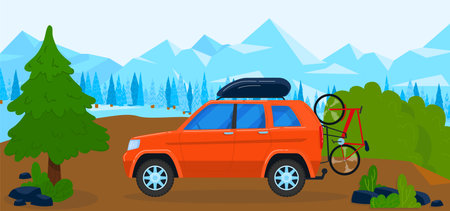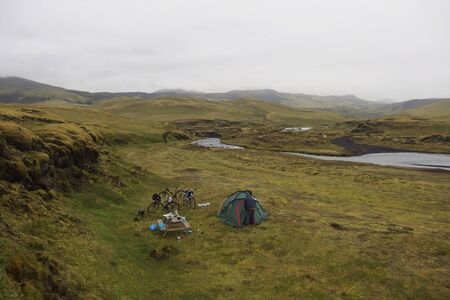Introduction to Wild Camping in Scotland
Beneath brooding skies and along the sweeping, heather-clad hillsides, Scotland beckons adventurers with an untamed spirit. Here, wild camping is more than simply pitching a tent; it’s an invitation to immerse yourself in the raw beauty of the Highlands and islands, where lochs mirror the shifting clouds and ancient forests whisper stories on the wind. The freedom to sleep under a quilt of stars, far from city lights and bustling crowds, has become a cherished tradition woven into Scottish culture. There’s a romance in waking to the call of curlews or sipping morning tea beside a mist-draped glen, feeling as though you are part of the landscape itself. In Scotland, outdoor living isn’t just tolerated—it’s celebrated, offering a sense of liberation seldom found elsewhere in Britain. This spirit of open-air adventure sets the stage for understanding why Scotland stands apart when it comes to embracing wild camping, promising both solitude and soulful connection with nature’s grandeur.
2. The Land Reform (Scotland) Act 2003: The Legal Right to Roam
Scotland’s relationship with its wild landscapes is deeply woven into the fabric of national identity, and nowhere is this more apparent than in the Land Reform (Scotland) Act 2003. This groundbreaking legislation enshrines the public’s right to access most land and inland water throughout Scotland for recreation, education, and enjoyment. Unlike elsewhere in the UK, where private land often comes with explicit restrictions, Scotland champions an open-armed approach to its countryside—granting everyone the “right to roam.”
At its heart, this right reflects a cultural ethos rooted in respect for both nature and neighbour. The act empowers people to explore forests shrouded in morning mist, meander along loch shores, or camp beneath the endless Highland sky—all while observing the Scottish Outdoor Access Code. This code sets out responsibilities: leave no trace, respect privacy and property, and care for wildlife and livestock. The spirit of mutual trust underpins these freedoms, fostering a connection between people and place that feels distinctly Scottish.
The Scope of Access Rights
| Area/Activity | Access Permitted? | Notes |
|---|---|---|
| Most uncultivated land (e.g., moorlands, woods) | Yes | Respect for crops/livestock required |
| Inland water (rivers & lochs) | Yes | For activities like swimming or canoeing; avoid disturbance |
| Private gardens & school grounds | No | Excluded from right to roam |
| Sensitive conservation areas | Restricted at times | May have seasonal limits to protect wildlife |
| Campsites & buildings | No | Permission required for enclosed spaces/buildings |
The Cultural Impact of Roaming Rights on Outdoor Pursuits
The legal right to roam has profoundly shaped outdoor culture in Scotland. Wild camping becomes not just a privilege but a tradition—an invitation to find solace among ancient pines or wake to birdsong by a tranquil loch. Hillwalking, cycling, horse riding, and paddling are all enriched by the freedom to wander responsibly across breathtaking vistas without fences or keep out signs barring the way.
This openness encourages a collective stewardship: visitors and locals alike are guardians of these wild places. The result is a landscape cherished not only for its beauty but for its role as a democratic space—a place where everyone can seek adventure or quietude, guided by respect and reverence for the land itself.

3. How Wild Camping Works in Scotland
Wild camping in Scotland is not simply a matter of pitching your tent wherever you fancy; it is an artful dance with the land, guided by both legal rights and time-honoured customs. Thanks to the Land Reform (Scotland) Act 2003, adventurers have the unique privilege to camp on most unenclosed land, but this freedom comes hand-in-hand with a deep sense of responsibility. The golden rule here is simple: Leave No Trace. This means you should always take away all your rubbish, avoid lighting open fires where possible, and never disturb wildlife or livestock. If you must light a stove, use it carefully and always restore the site to its natural state before moving on.
Respect for local communities and fellow campers weaves through every facet of Scottish wild camping culture. It’s considered good form to keep your group small, stay discreet, and camp only for two or three nights in one spot. Seasoned wild campers cherish these practices, finding beauty in treading lightly upon heather-clad hills or beside serene lochs. If you encounter farmers or landowners, a polite greeting goes a long way—after all, rural hospitality is part of what makes Scotland magical.
Practicalities are equally important: choose well-drained ground for pitching your tent, away from buildings, roads, or cultivated fields. Water sources should be treated with respect—camp at least 30 metres away from lochs or streams to prevent pollution and preserve the clarity of these storied waters. As dusk falls and the landscape glows under the soft Scottish twilight, remember that your presence should blend into the wild tapestry rather than leave a lasting mark. This gentle stewardship is what distinguishes wild camping in Scotland from anywhere else in the UK—a cherished tradition rooted in both freedom and care.
4. Wild Camping in the Rest of the UK: A Different Story
While Scotland opens its arms to wild campers under the Land Reform (Scotland) Act 2003, the rest of the United Kingdom tells a markedly different tale—one shaped by private landownership, tradition, and a more reserved approach to access. In England, Wales, and Northern Ireland, wild camping is not generally a legal right; instead, it often requires explicit permission from landowners, casting a shadow over spontaneous adventures beneath the stars.
In England and Wales, most land is privately owned or managed by organisations such as the National Trust. The Countryside and Rights of Way Act 2000 (CRoW) grants walkers access to open country and common land but notably does not include the right to camp overnight. Dartmoor National Park in Devon was long considered an exception—where wild camping was tolerated on certain moorland areas. However, even there, recent court rulings have muddied the waters, leaving would-be campers navigating a patchwork of permissions and local regulations.
Northern Ireland’s landscape is even more restrictive; with the majority of land in private hands and limited public rights of way, wild camping is largely off-limits without prior agreement from landowners. For many outdoor enthusiasts across England, Wales, and Northern Ireland, this means relying on official campsites or quietly seeking permission—a far cry from the freedom found north of the border.
Comparing Wild Camping Rights Across the UK
| Nation | Legal Status of Wild Camping | Cultural Attitude |
|---|---|---|
| Scotland | Permitted under Land Reform (Scotland) Act 2003 with responsible conduct | Welcoming, part of outdoor tradition |
| England | Generally prohibited without landowners permission (except limited areas) | Cautious, less common outside official sites |
| Wales | Same as England; mainly not allowed except with consent | Sporadic and discreet; often relies on mutual trust |
| Northern Ireland | Not permitted without landowners consent | Largely discouraged; few opportunities for true wild camping |
Anecdotes from the Wild: Culture in Practice
If you’ve ever tried pitching a tent on a Lake District fell or along the Pembrokeshire coast, you might recall furtive glances and whispered conversations—“Do you think we’ll get moved on?” In contrast, Scottish wild campers are often met with cheery nods from passing hillwalkers or friendly advice about nearby burns for fresh water. This fundamental difference colours not just where people sleep under canvas but also how they interact with nature and each other.
The Heartbeat of British Outdoor Life
The divergence in wild camping rights reflects deeper cultural attitudes towards land, ownership, and adventure. In Scotland, access is woven into the fabric of rural life—a birthright championed by both locals and visitors alike. Elsewhere in Britain, respect for boundaries and private property prevails; here, wild camping is an act of discretion rather than celebration. The result? A patchwork of experiences that makes each night spent beneath British skies uniquely memorable—and reminds us that sometimes, freedom is found not just in law but in shared understanding.
5. Best Practices and Local Considerations
Immerse Yourself, Tread Gently
Wild camping in Scotland is a rare privilege, woven into the nation’s fabric by the Land Reform (Scotland) Act 2003. To savour this freedom fully, it is essential to follow best practices that honour both the wild places and the communities whose lives are shaped by them. Begin by selecting your site with care—choose discreet spots well away from roads, buildings, or cultivated land, and keep group sizes small to preserve the solitude that makes Scottish landscapes so magical.
Leave No Trace: A Promise to the Highlands
The romance of waking up beneath a sky brushed with Scottish mist is matched only by the responsibility to leave no trace behind. Use a lightweight stove instead of lighting open fires, which can scar the earth and risk wildfire. Pack out all litter—including organic waste—and avoid disturbing wildlife or livestock. The lush mosses and ancient heather underfoot are delicate; pitch your tent on durable ground and move camp after a night or two to prevent damage.
Respect for Local Life and Traditions
Scottish hospitality is legendary, but so too is the expectation of mutual respect. Always close gates behind you, follow established paths where possible, and keep noise to a minimum—especially at dusk and dawn when farms come alive with quiet rhythms. If you encounter land managers or local residents, greet them warmly and be open about your plans; most will offer advice or share stories that enrich your journey.
Embrace Quiet Wonder
In Scotland, wild camping is not just an outdoor pursuit—it’s an invitation to slow down and reconnect with nature’s cadence. Rise early to watch mist drift over lochs, listen for the distant call of curlews, or let rain on canvas lull you into reflection. By embracing mindful practices and local courtesy, you become part of a living tradition—one that balances adventure with stewardship, ensuring these soulful landscapes endure for generations of wanderers yet to come.
6. Conclusion: The Spirit of Scottish Wild Camping
To camp wild under Scotland’s endless sky is to step into an ancient rhythm—a gentle dialogue between land and soul, where every hill, loch, and glen offers both sanctuary and adventure. The Land Reform (Scotland) Act 2003 is more than a legal framework; it is a living testament to the Scottish ethos of openness and respect for nature, setting it apart from the rest of the UK. While elsewhere in Britain wild camping may be hemmed by rules and permissions, here you are invited to wander, to lay your head wherever the heather yields, provided you tread lightly and leave no trace.
This right is not only practical but deeply poetic. It carries with it a sense of trust—a silent pact between people and place, echoing the British reverence for green spaces and untamed beauty. Whether you find yourself enveloped by mist on Rannoch Moor or watching dawn break over the Cuillin Ridge, there is an unmistakable feeling of belonging. Here, solitude becomes kinship: with the land, with history, and with fellow wanderers who cherish these freedoms.
As you pack away your tent beneath a sky splashed with northern light, you carry home not just memories, but a renewed sense of wonder—one that speaks to the heart of Britain’s love affair with its wild places. In Scotland, wild camping is more than an activity; it is a celebration of open horizons, shared heritage, and the quiet joy found in simply being part of the landscape.


